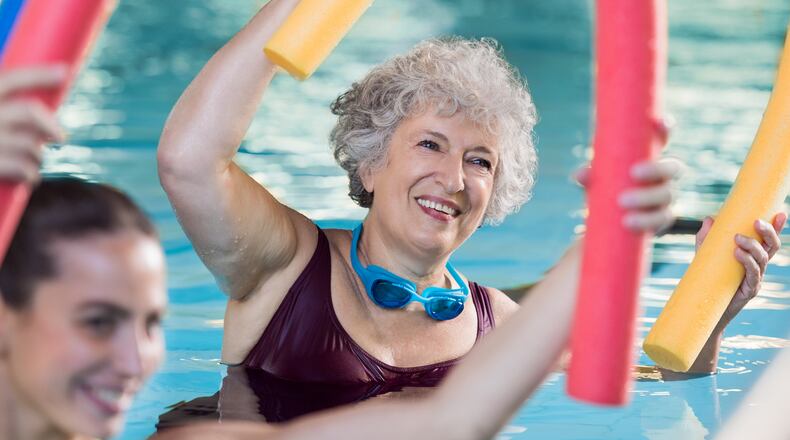For older people, this is very important, as falls are the leading cause of injury in people older than 75.
You do not need to run a marathon or lift heavy weights to experience the many benefits exercise has to offer. For those who have difficulty with certain movements, modifications can be made that still allow for progress. In one study, women ages 75-80 who were sedentary were recruited to determine the effects of resistance training on their strength levels.
Exercises were performed three times per week for a total of 6 weeks. The result was that average strength levels increased by nearly 65 percent.
When choosing exercises appropriate for you, it is wise to first check with your doctor, especially if pre-existing medical conditions exist. This way you can proceed with peace of mind and work at your own pace, all the while knowing you are getting stronger each day.
Consistency is key once you begin exercising. For beginners this might mean being more active every day yet not with great intensity, such as starting with 20 extra minutes of walking. For others it may mean a pattern of every other day, once in the morning and once in the afternoon or evening.
Everyone is different in terms of what they can handle. so if in doubt. once cleared to exercise, seek the advice of a fitness professional who can custom design a program for you.
Tip: Workouts should include exercises that target the hips. Power is generated through the hips and there are many muscles working together to allow for motion to occur.
One of the most important of these is the Gluteus Maximus. When this muscle is working well, going up and down stairs, bending down to get something from under the sink, getting out of a car and pushing open a heavy door, become easier. To strengthen the Gluteus Maximus, squatting is very beneficial.
Simply put, squatting involves bending the knees and lowering the body part way toward the floor and then rising up again. Beginners can try using a chair to sit and stand from, as a way of initial strengthening. Starting with two to three sets to fatigue (with proper form), is usually sufficient.
Tip: To test strength, stand in front of a sturdy chair with the back of knees touching the seat. Without allowing the knees to move forward, try slowly sitting. If you find you ‘plop’ at the end of the motion when close to sitting, this is an indication of weak glutes. Other weight bearing exercises proven to strengthen the hips and legs include lunges, side steps and stair climbing.
Marjie Gilliam is an International Sports Sciences Master certified personal trainer and fitness consultant. She owns Custom Fitness Personal Training Services LLC. Send email to marjie@ohtrainer.com.
About the Author
